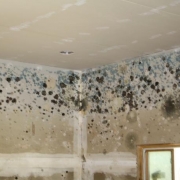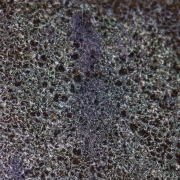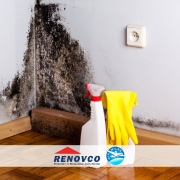How to Avoid Mold & Mildew in Your Home
How to Keep Your Home Free of Mold and Mildew
Once your bathroom remodel is complete and your home seems to be in perfect shape, you’ll want to maintain it that way for as long as possible. These cleaning and maintenance suggestions can help your bathroom makeover last longer and prevent mold and mildew growth:
What is the difference between mold and mildew?
Mold and mildew are spore-like collections of microscopic organisms that flourish in damp and moist areas, such as your bathroom.
Mold spores start to develop and are eventually discharged into the air if you don’t clean your bathroom correctly.
These spores are subsequently inhaled into your lungs, which can be dangerous for persons with weak immune systems or breathing problems like asthma. Breathing problems, coughing, a sore throat, and headaches are all common side effects.
Mold flourishes in humid environments, therefore it creates the biggest issues during the summer. Mold may also cause havoc in the winter if the conditions are perfect.
Mold and mildew will taint the air quality in your home. Mold might be to blame if you’ve been experiencing problems breathing inside. In addition to coughing and wheezing, severe cases can result in neurological problems and even death. As a result, every homeowner should be concerned about mold.
It’s critical to understand how mold grows and where it might appear. This will aid in the prevention of mold formation in the first place, which is always the best option. Mold can be difficult to completely remove once it has appeared.
When it comes to mold and mildew, what’s the difference?
Mold and mildew are both fungi, although there are some small variations between them. Mold, for example, is a common component of home dust.
Mildew, on the other hand, prefers flat surfaces to develop on. It may be found on paper, leather, wood, walls, and ceilings, among other organic materials.
The look and odor of the two are also distinct.
Mold can be black, blue, red, or green in color. It also has a slimy feel and can occasionally contain fluff.
Mildew begins as a white substance, which distinguishes it from mold. It begins to change hues of yellow and brown as it progresses. It has a powdery feel rather than slime or fuzz.
In order to form, both require biological material. It’s what provides a food supply for fungi to develop on. Mold and mildew grow on a variety of materials, including wood, leather, paper, and textiles.
The fragrance of the two distinguishes them. Mildew has a faint odor that smells musty. It’s commonly compared to wet, un-dried clothes.
Mold has a much stronger and terrible odor. This is because the mold produces microbial volatile organic compounds, or MVOCs, as it grows.
Finally, mildew grows on surfaces, whereas mold crawls beneath them. So, if you notice fungal growth on the surface of your cabinets, you know it’s mildew.
Mold grows under the surface, in cracks and holes, inside walls, and in fissures and holes. As a result, mold is more difficult to detect, which can lead to it spreading out of control.
Mold and mildew thrive in the following conditions.
Mold and mildew can occur everywhere there is high heat, a food supply (organic material), and a moderate level of humidity. As a result, the months of June through August are the most difficult. During these months, it’s advisable to keep a watchful check on your walls, ceilings, and behind sinks.
Mold and mildew can also occur if your heat is turned on in the winter and there is dampness.
You’re in the danger zone if the temperature is between 77° and 87° and the humidity is between 62 and 93 percent. When evaluating your house for mold and mildew, keep this in mind.
The following is a list of the most common molds found in homes:
- Alternaria
- Aspergillus
- Chaetomium
- Cladosporium
- Fusarium
Whatever sort of mold develops in your house, they all have one thing in common: they must be removed. Mold of any sort may be deadly, which is why you should get rid of it. The good news is that mold and mildew can be prevented from growing in the first place.
Mold and Mildew Checking Points in Your Home
In your Ottawa home, you’ll need to know where to look for mold and mildew. You may not even be aware that you have a mold problem if this is not done. That’s the last thing you want, because mold that has gotten out of hand may cause serious harm to your house. Not only that, but getting rid of it will be expensive. The greatest thing you can do is examine your home on a regular basis to avoid it from forming.
During the hot/humid months, pay special attention to the following areas:
- Your ductwork for ventilation
- Your HVAC system’s immediate surroundings
- Sinks can be found under the surface.
- Bathroom and kitchen areas surrounding sinks and faucets
- Showers, tubs, and shower curtains
- Any location with a lot of moisture (i.e., cabinets next to the shower)
- Dishwashers and washers and dryers
- Your dishwasher’s immediate surroundings
- Inside and outside of your refrigerator
You can avoid most mold and mildew from growing if you keep a careful check on these locations. Mold may, however, grow behind your walls and in other places you can’t see. That’s why learning how to undertake mold testing in your house is an excellent idea.

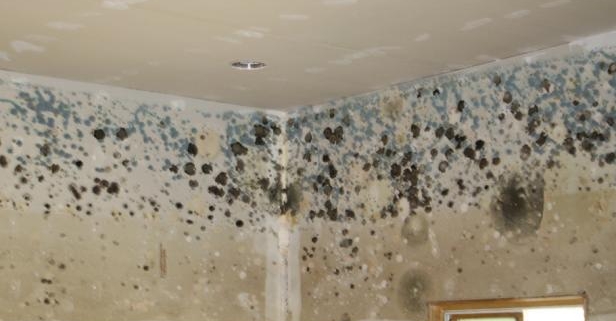

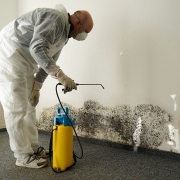
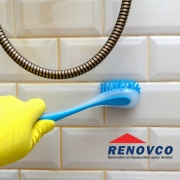
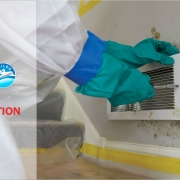 Mold Remediation
Mold Remediation